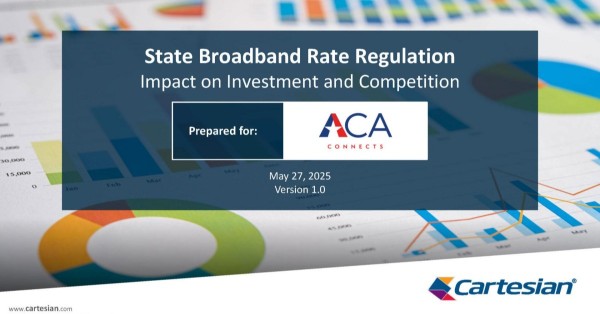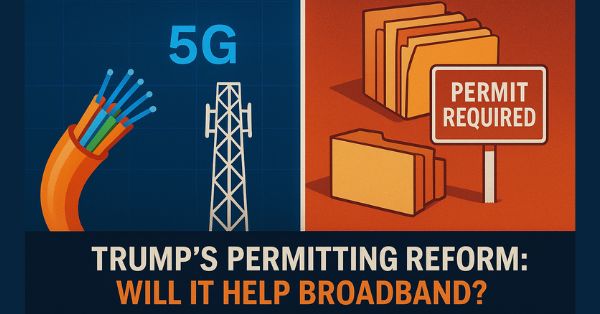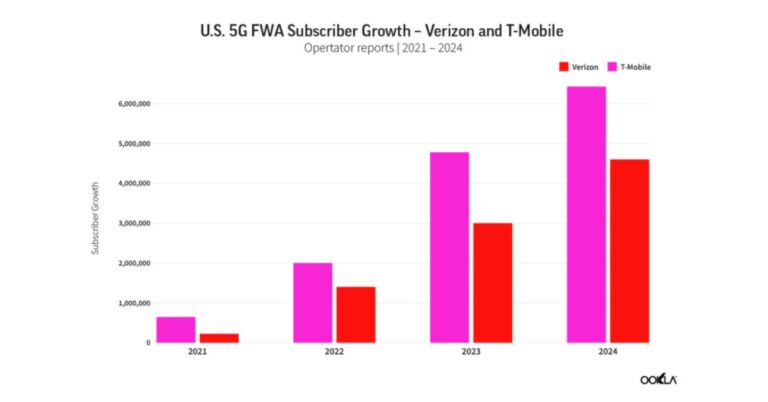As states push forward with laws to cap broadband prices for low-income consumers, a new industry-backed study warns that these regulations could significantly reduce network investment, particularly from smaller internet service providers (ISPs). Consulting firm Cartesian, in a report commissioned by ACA Connects, projects capital expenditure (capex) could decline by up to 41% under certain rate cap scenarios.
States Turn to Broadband Rate Regulation After ACP’s End
The end of the federal Affordable Connectivity Program (ACP), which provided subsidies to over 23 million U.S. households, has prompted several states to propose or enact legislation to make broadband more affordable for low-income populations.
New York, for instance, implemented a law mandating ISPs offer broadband plans at $15 per month for eligible customers. Other states, including California, Maryland, Massachusetts, Vermont, Connecticut, and Minnesota, are advancing similar legislation. These policies are intended to close the digital divide but may come at a significant cost to network expansion and upgrades.
Study Finds Broadband Rate Regulation May Slash ISP Investment by $13.6B
The Cartesian study modeled multiple pricing scenarios to assess the impact on broadband investment. With a moderate cap of $30 per month for low-income users, compared to an average broadband ARPU of $70, the study estimates ISP capex would fall by 19%, equating to a $6.2 billion reduction.
In a more aggressive scenario, with ARPU falling to $60 and a $15 low-income rate mandated market-wide, investment could plummet by 41%, or approximately $13.6 billion.
“We would expect less investment because providers wouldn’t be able to offset that lost revenue from increased uptake,” said Michael Dargue, VP at Cartesian. “They’re going to need to recover that lost revenue somewhere,” potentially leading to higher prices on non-broadband services.
Broadband Rate Caps Could Harm Small ISPs the Most
While some state laws exempt smaller providers—for example, New York’s law exempts ISPs with fewer than 20,000 subscribers—most proposed bills have broad applicability. In Massachusetts, only municipal broadband networks would be exempt.
The study warns that smaller ISPs, which often operate in a single state and have more concentrated customer bases, are particularly vulnerable. The regulatory pressure could strain their finances, discourage expansion, and reduce the overall level of service competition in local markets.
These dynamics could lead to consolidation or market exits, especially in rural and underserved regions where smaller ISPs play a critical role.
Industry Opposes Broadband Rate Regulation, Seeks Federal Action
Industry associations, including CTIA, NCTA, and US Telecom have asked the U.S. Department of Justice (DOJ) to preempt state-level broadband rate regulation. In filings submitted this week, the groups argued that such laws mirror utility-style regulation once proposed under federal Title II frameworks and threaten consistency in national broadband policy.
These groups assert that broadband pricing mandates disrupt competitive markets, limit innovation, and ultimately harm consumers by reducing service options and delaying network upgrades.
“The concern isn’t just today’s rules—it’s what happens when those rules change,” wrote New Street Research policy analyst Blair Levin. “Rate regulation introduces political and financial uncertainty that could spook investors.”
Tennessee Rejects Broadband Rate Regulation to Encourage Investment
Not all states are moving in the same direction. Tennessee recently passed a law prohibiting local governments from imposing rate controls on broadband services. Supporters argue that a free-market approach encourages investment and avoids the unintended consequences of one-size-fits-all mandates.
This divergence underscores a growing policy divide, with some states emphasizing affordability and others prioritizing market flexibility to attract private capital.
Broadband Rate Regulation vs Subsidies: Which Expands Access Without Cutting Investment?
While the study critiques rate regulation, it voices support for direct subsidy models, like the ACP, as more effective tools for improving affordability without deterring investment. It references established programs in housing, nutrition, and utilities as precedent for using targeted subsidies to assist low-income households.
ACA Connects and other groups are urging policymakers to pursue similar models for broadband, arguing that subsidies provide aid without compromising the economic case for building new networks.
How Broadband Rate Regulation Could Reshape the U.S. ISP Market
If states move forward with broad price regulation, the long-term consequences could include:
- Lower network investment, particularly in rural or lower-income areas.
- Reduced competition, as smaller ISPs scale back or exit the market.
- Higher prices for other services, as providers try to recoup lost broadband revenue.
- Delays in reaching digital equity goals, despite good intentions.
The ACA Connects study warns that as many as 35% of network investment dollars could disappear in states with strict rate controls. The broader implication is that capital markets may hesitate to fund broadband projects in regions where price caps are unpredictable or politically driven.
Policy Choices Ahead: Balancing Regulation and Broadband Growth
While the drive to make broadband more affordable is understandable, the debate over rate regulation versus direct subsidies is far from settled. With billions in infrastructure investment at stake, the decisions made at the state and federal levels in the coming months will shape the trajectory of the U.S. broadband landscape, especially as the country works to close remaining coverage gaps.
Whether through legislation, litigation, or compromise, the push for broadband affordability is entering a pivotal phase, with long-term consequences for providers, consumers, and the economy at large.





















